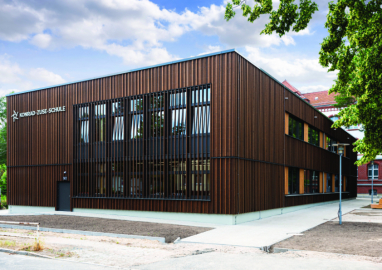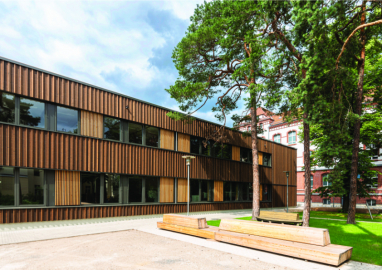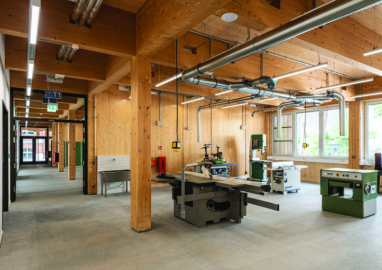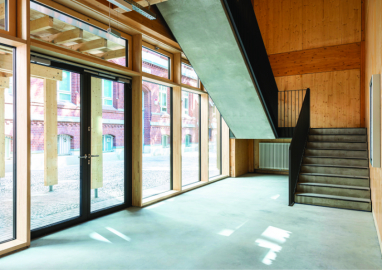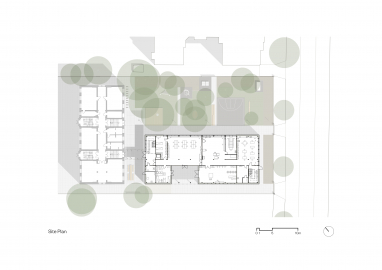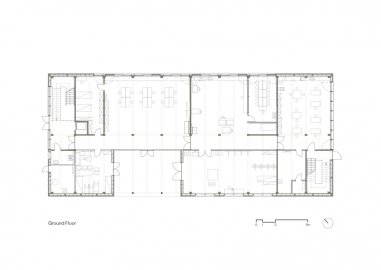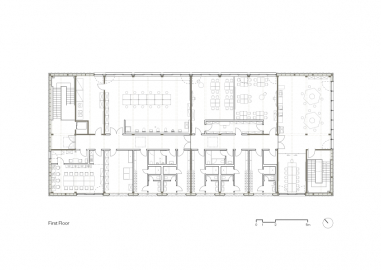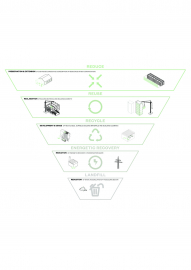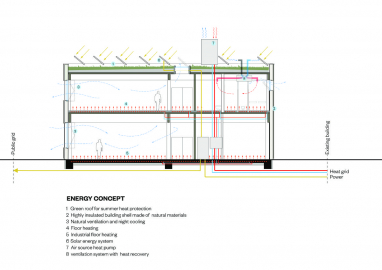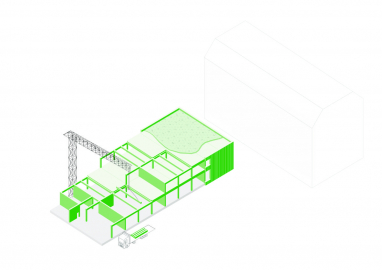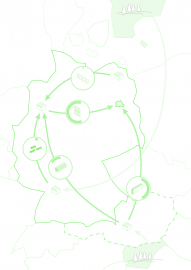Workshop Building - Konrad-Zuse-Schule
Creating values for the future - building school buildings sustainably. The sustainability concept is a combination of the use of renewable raw materials with a robust and simple timber construction and the saving of costly building services. This concept thus has a pilot character in the construction of school building projects.
A new wooden workshop building was constructed for the vocational school with a special educational focus. It is oriented transversely to the massive 3-storey existing building from the late Wilhelminian period and pushes itself into the foreground of the site. The cuboid building is structured by openings of different sizes. Facing the street, a large shop window offers a view of the school's activities. In contrast to the simple cubature of the 44.48 m long, 19.14 m wide and 8.80 m high structure is the external façade cladding of vertical carbonised wooden slats. The exemplary and visible use of natural building materials presents the ecological construction method to the outside. The design of the interior is characterised by the many surfaces left in their raw state, which underline the workshop character.
The result was a building that leaves a small ecological footprint. The goal was to develop a durable construction method that can react to changing space requirements and environmental influences through a reversible construction. In the future, the building can be flexibly adapted through different programming. The ongoing school operation benefited from the high degree of prefabrication and the resulting comparatively low and shorter noise emissions in the construction process.
The predominant use of ecological building materials was the logical consequence of the holistic approach. With its warm surface, wood creates a pleasant learning atmosphere and ensures a balanced room climate. The natural ventilation via the windows ensures sufficient fresh air supply and thus eliminates the need for high-maintenance mechanical ventilation systems. In addition, the interior fittings could be reduced to a minimum. The bright rooms ensure good indoor air and a high level of user comfort.
The result was a building that leaves a small ecological footprint. The goal was to develop a durable construction method that can react to changing space requirements and environmental influences through a reversible construction. In the future, the building can be flexibly adapted through different programming. The ongoing school operation benefited from the high degree of prefabrication and the resulting comparatively low and shorter noise emissions in the construction process.
The predominant use of ecological building materials was the logical consequence of the holistic approach. With its warm surface, wood creates a pleasant learning atmosphere and ensures a balanced room climate. The natural ventilation via the windows ensures sufficient fresh air supply and thus eliminates the need for high-maintenance mechanical ventilation systems. In addition, the interior fittings could be reduced to a minimum. The bright rooms ensure good indoor air and a high level of user comfort.

